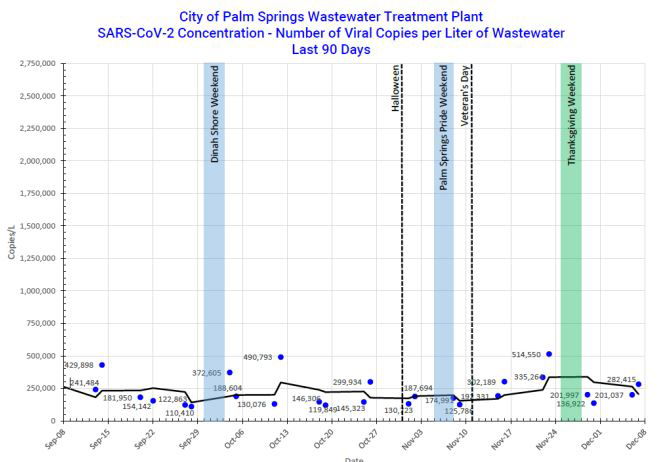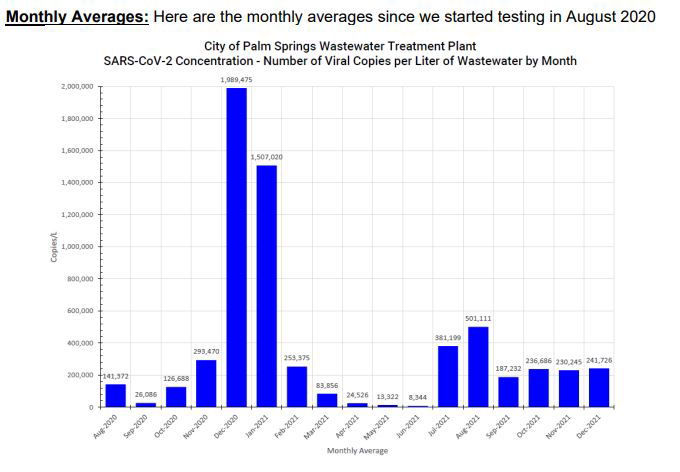Omicron variant detected in Palm Springs wastewater
The presence of the Omicron variant has been detected in Palm Springs' wastewater.
The city's most recent report shows that the Omicron variant was detected in a Dec. 7 sample of the city's wastewater.
The Omicron variant has not been detected in Riverside County, but that doesn't mean it couldn't already be in the area.
"As with other variants, it's is likely the Omicron variant will be within the community before it is confirmed through testing," said county spokesperson Jose Arballo Jr.
According to the city officials, a person will usually shed coronavirus through their waste within a day or two of infection, then symptoms may show up five to ten days later if any at all.
"When you have Covid, like anything else when you're sick, you're passing that through your body, into the toilet and into the treatment plant," said Palm Springs Assistant City Manager Marcus Fuller back in March.
For the past year and a half, Palm Springs has been taking 24-hour composite samples from the wastewater treatment plant which is then sent to GT Molecular, a testing laboratory in Fort Collins, Colorado for analysis.
City officials have noted that the reports as an indicator of how much of the virus is in the community, providing a warning to a new surge in cases.
GT Molecular has now added a beta-test for the signature mutations found in the emerging Omicron variant.
"While there is much unknown of this new variant, GT Molecular notes that their Omicron test is still in the beta form and their results should be interpreted with caution," reads the report.
The latest wastewater report taken from Dec. 6 & 7 revealed that the average number of viral copies detected at the City’s wastewater treatment plant has increased. The numbers represent samples taken eleven and twelve days following Thanksgiving.
Officials noted that while there is an increase, the data points are still similar to what we have been seeing over the past three months.


In addition, the number is significantly lower compared to one year ago.

"The data shows that the average for December is about the same as the average for the months of October and November," reads the wastewater report.




